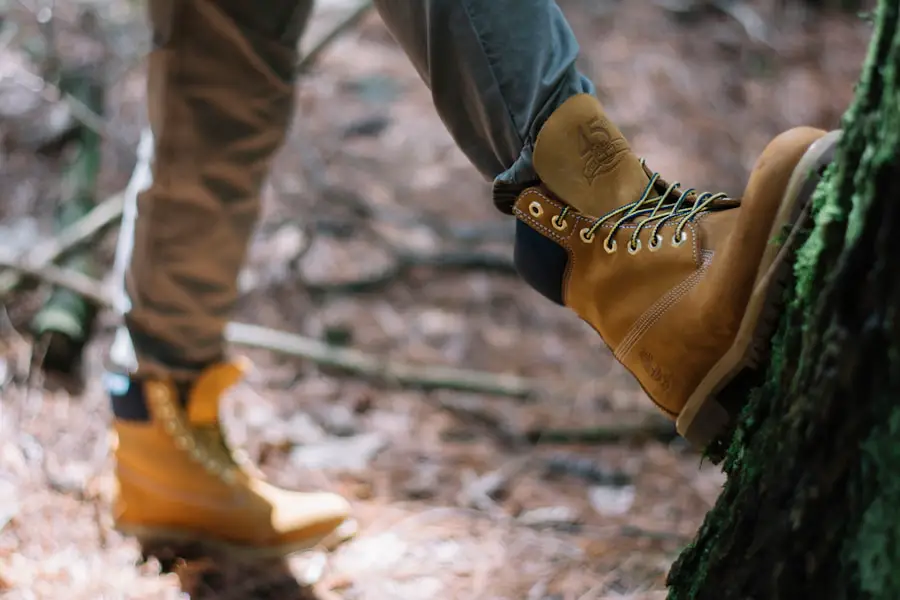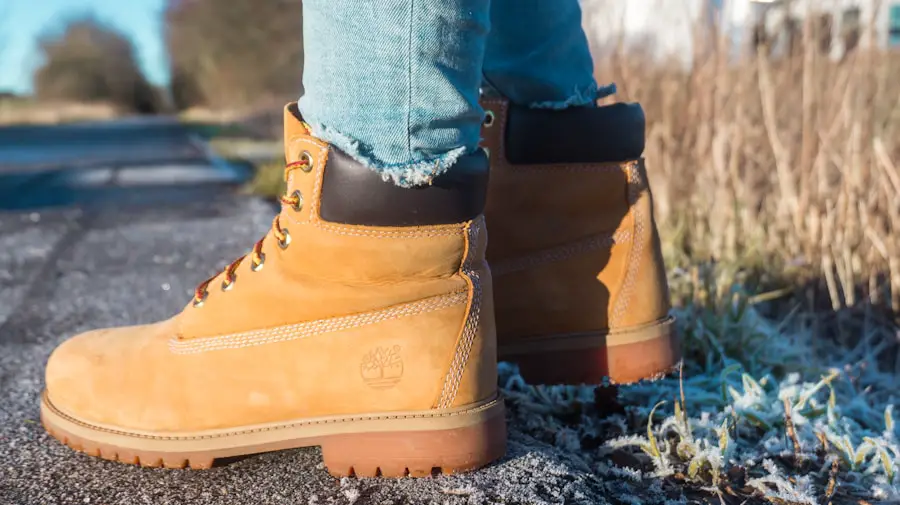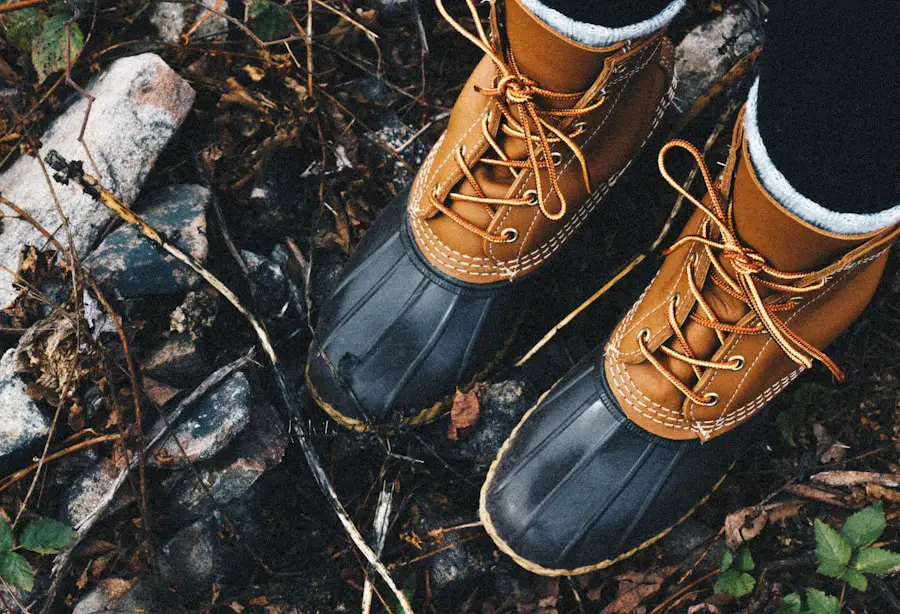Timberland has long been synonymous with rugged outdoor footwear, and its hiking boots are no exception. Established in 1973, the brand initially gained fame for its waterproof leather boots, which quickly became a staple for outdoor enthusiasts and urban dwellers alike. Timberland hiking boots are designed to cater to a wide range of activities, from casual day hikes to more challenging treks in diverse environments.
The brand’s commitment to quality craftsmanship and innovative design has made it a popular choice among hikers, backpackers, and nature lovers. The appeal of Timberland hiking boots lies not only in their aesthetic appeal but also in their functionality. With a variety of models tailored to different hiking needs, Timberland offers options that prioritize durability, comfort, and performance.
Whether you are traversing rocky trails or navigating muddy paths, these boots are engineered to provide the support and protection necessary for a successful outdoor experience. As we delve deeper into the features that make Timberland hiking boots a preferred choice, it becomes clear why they have earned a loyal following among outdoor enthusiasts.
Key Takeaways
- Timberland hiking boots are known for their durability and quality materials, making them a popular choice for outdoor enthusiasts.
- These boots provide excellent comfort and support for hiking, with features such as cushioned insoles and padded collars for ankle support.
- The traction and grip on various terrains is impressive, thanks to the rugged outsoles and advanced tread designs.
- Timberland hiking boots are waterproof and breathable, keeping your feet dry and comfortable in all weather conditions.
- Despite their sturdy construction, Timberland hiking boots are designed to be lightweight and provide a comfortable fit for long-distance hiking.
Durability and Quality of Materials
High-Quality Materials
Timberland sources premium leather and synthetic materials that are designed to withstand the rigors of outdoor activities. For instance, many models utilize full-grain leather, known for its strength and resistance to wear and tear.
Durable and Breathable
This type of leather not only provides a robust exterior but also develops a unique patina over time, enhancing the boot’s character while maintaining its integrity. In addition to leather, Timberland incorporates advanced synthetic materials that enhance the overall performance of their hiking boots. These materials often include nylon mesh for breathability and lightweight support, as well as rubber compounds for outsoles that offer superior traction.
Sustainable Materials
The combination of these materials ensures that Timberland boots can endure harsh conditions while providing the necessary flexibility and comfort for long hikes. Furthermore, Timberland’s commitment to sustainability is evident in their use of eco-conscious materials, such as recycled plastics and responsibly sourced leathers, which appeal to environmentally conscious consumers.
Comfort and Support for Hiking

Comfort is paramount when it comes to hiking footwear, and Timberland has made significant strides in ensuring that their boots provide ample support for long treks.
Many models feature cushioned insoles that offer shock absorption, reducing fatigue during extended periods of walking. The use of EVA (ethylene-vinyl acetate) foam in the midsoles contributes to this comfort by providing lightweight cushioning that conforms to the foot’s shape.This adaptability is crucial for hikers who may encounter varying terrain and need footwear that can accommodate their movements. Moreover, Timberland hiking boots often come equipped with supportive features such as padded collars and tongues, which help prevent chafing and provide additional ankle support. This is particularly important for those who venture into rugged landscapes where ankle stability is essential to avoid injuries.
The combination of cushioning and support allows hikers to maintain their energy levels over long distances, making Timberland boots a reliable choice for both novice and experienced trekkers.
Traction and Grip on Various Terrains
| Terrain | Traction Level | Grip Level |
|---|---|---|
| Asphalt | High | High |
| Gravel | Medium | Medium |
| Mud | Low | Low |
| Snow | Low | Low |
| Rocky | High | High |
When navigating diverse terrains, traction is a critical factor that can significantly impact a hiker’s safety and performance. Timberland hiking boots are designed with specialized outsoles that provide excellent grip on various surfaces, from rocky trails to muddy paths. The rubber outsoles often feature multi-directional lugs that enhance traction by allowing for better grip during ascents and descents.
This design is particularly beneficial when traversing steep inclines or slippery surfaces where stability is paramount. For example, the Timberland White Ledge Mid Waterproof Hiking Boot showcases an aggressive lug pattern that excels in providing traction on uneven ground. Hikers can confidently tackle challenging trails without worrying about slipping or losing footing.
Additionally, some models incorporate Vibram outsoles, known for their superior grip and durability. This level of traction not only enhances performance but also instills confidence in hikers as they navigate through unpredictable environments.
Waterproofing and Breathability
Waterproofing is another essential feature that sets Timberland hiking boots apart from many competitors. Many models are equipped with Timberland’s proprietary waterproof technology, which ensures that feet remain dry even in wet conditions. This is particularly advantageous for hikers who may encounter streams, puddles, or rain during their adventures.
The waterproof membranes used in these boots effectively block moisture while allowing sweat vapor to escape, maintaining a comfortable microclimate inside the boot. Breathability is equally important, especially during warmer months or on strenuous hikes where perspiration can accumulate. Timberland addresses this need by incorporating breathable mesh panels in certain models, allowing for increased airflow without compromising waterproof capabilities.
This balance between waterproofing and breathability ensures that hikers can enjoy their outdoor experiences without the discomfort of damp feet or overheating.
Weight and Fit for Long-Distance Hiking

The weight of hiking boots can significantly influence a hiker’s endurance on long-distance treks. Timberland offers a range of options that cater to different preferences regarding weight and fit. While some models prioritize sturdiness and protection with heavier materials, others focus on lightweight construction without sacrificing essential features.
For instance, the Timberland Chocorua Trail Mid Waterproof Boot is designed with a lightweight build that still provides ample support and protection for extended hikes. Fit is another critical aspect when selecting hiking boots, as an improper fit can lead to blisters and discomfort over time. Timberland recognizes this need by offering various sizes and widths across their product line, ensuring that hikers can find a pair that fits snugly without being overly tight.
Additionally, many models feature adjustable lacing systems that allow wearers to customize the fit according to their preferences. This attention to fit not only enhances comfort but also contributes to overall performance on the trail.
Customer Reviews and Feedback
Customer reviews play a vital role in understanding the real-world performance of Timberland hiking boots. Many users praise the brand for its durability and comfort, often highlighting how well the boots hold up after extensive use in various conditions. For instance, hikers frequently mention that even after multiple treks through rugged terrain or wet environments, their Timberlands remain intact without significant signs of wear.
However, feedback is not universally positive; some customers have noted issues with sizing or break-in periods. A few users report that certain models may feel stiff initially but become more comfortable after several uses. This highlights the importance of trying on different styles and sizes before committing to a purchase.
Overall, customer feedback indicates that while there may be some variability in individual experiences, Timberland hiking boots generally receive high marks for their quality and performance.
Are Timberlands Good Hiking Boots?
In evaluating whether Timberland hiking boots are a good choice for outdoor enthusiasts, it becomes evident that they offer a compelling combination of durability, comfort, traction, waterproofing, and fit. The brand’s commitment to using high-quality materials ensures that their boots can withstand the demands of various terrains while providing essential support for long hikes. Additionally, customer reviews reflect a generally positive reception among users who appreciate the balance between functionality and style.
Ultimately, the decision to choose Timberland hiking boots will depend on individual preferences regarding fit, weight, and specific hiking needs. For those seeking reliable footwear that can handle diverse conditions while offering comfort and support, Timberland presents a strong option worth considering in the realm of hiking footwear.
If you’re considering using Timberlands as hiking boots, you may also be interested in reading about the importance of car seats when traveling with children. Check out this article to learn more about how to keep your little ones safe while on the go.
FAQs
Are Timberlands good for hiking?
Yes, Timberland hiking boots are known for their durability, support, and traction, making them a popular choice for hikers.
What features make Timberland boots good for hiking?
Timberland hiking boots are designed with features such as waterproofing, rugged outsoles for traction, and cushioned footbeds for comfort, making them suitable for various hiking terrains.
Are Timberland boots waterproof?
Many Timberland hiking boots are equipped with waterproofing technology, such as Gore-Tex membranes or TimberDry waterproof membranes, to keep feet dry and comfortable during hikes in wet conditions.
Do Timberland boots provide good ankle support for hiking?
Yes, Timberland hiking boots are designed with ankle support in mind, providing stability and protection for the ankles during hikes on uneven terrain.
Are Timberland boots durable for hiking?
Timberland hiking boots are constructed with durable materials such as full-grain leather and rugged rubber outsoles, making them capable of withstanding the rigors of hiking and outdoor activities.
Can Timberland boots handle different types of hiking terrain?
Yes, Timberland hiking boots are designed to handle various types of terrain, including rocky trails, muddy paths, and steep inclines, making them versatile for different hiking environments.
